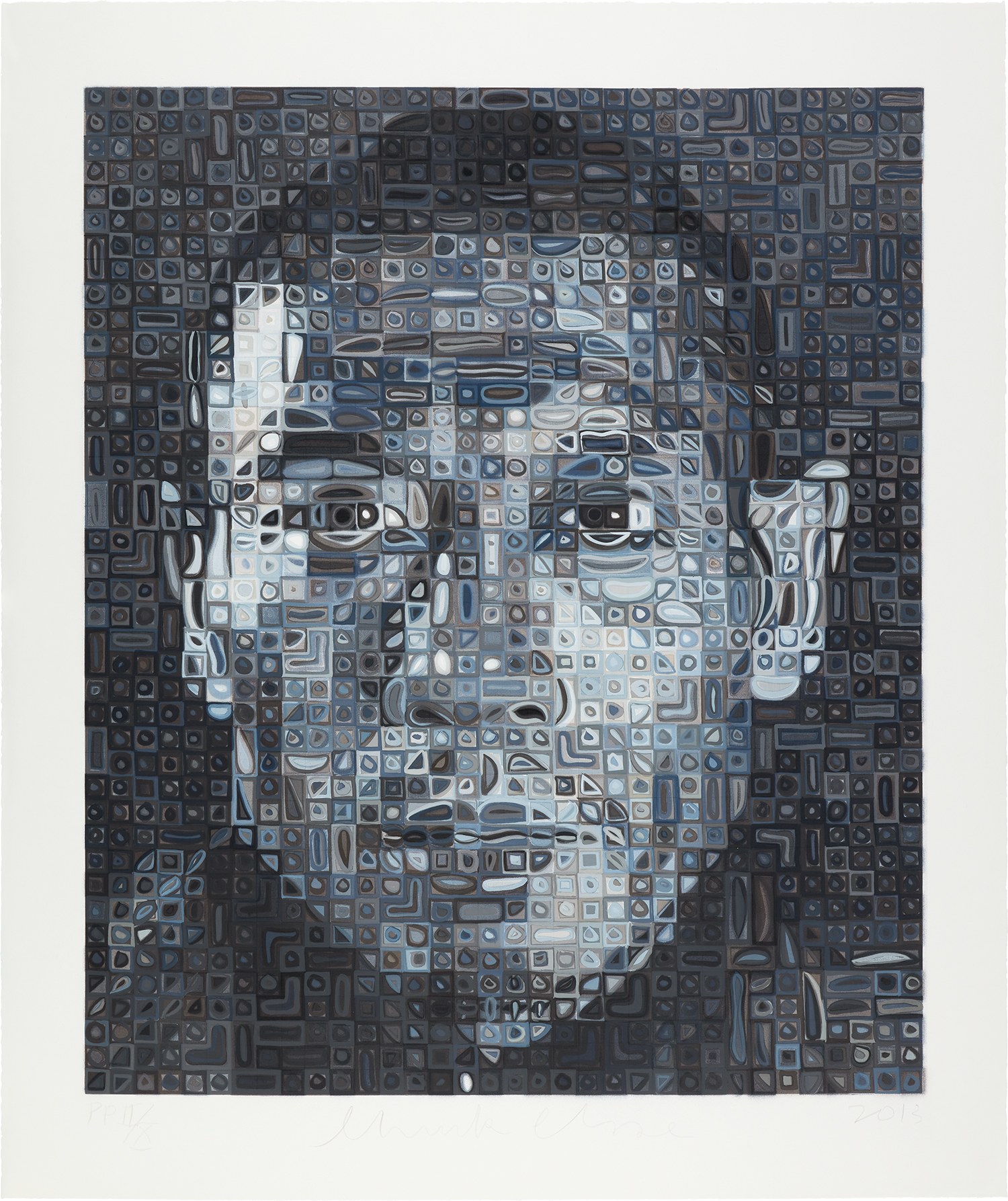

329
Chuck Close
Zhang Huan II
2013
Monumental screenprint in colors with airbrush, on Lanaquarelle paper, with full margins.
I. 47 7/8 x 40 in. (121.6 x 101.6 cm)
S. 57 x 48 1/8 in. (144.8 x 122.2 cm)
S. 57 x 48 1/8 in. (144.8 x 122.2 cm)
Signed, dated and numbered 'P.P. II/X' in pencil (a printer's proof, the edition was 60 and 10 artist's proofs), published by Two Palms Press, New York, unframed.